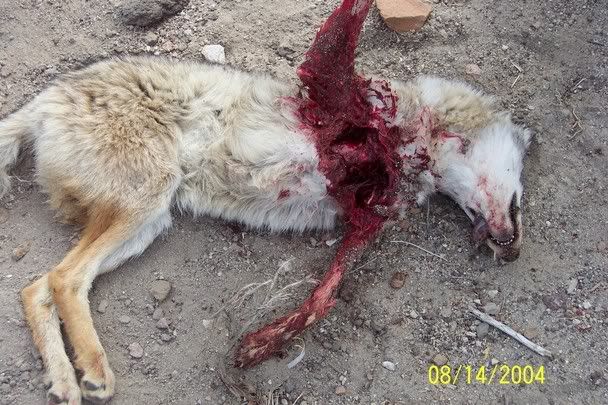wolftrapper
New member
Okay, the results are in.
I got 29 responses to my question of the average distance for shooting called coyotes.
It comes out to under 89 yards.
Now, if you are stalking, or if you just like the sniper type of shooting, you need a 22 250 or whatever. But if you are shooting coyotes for selling fur, you need a caliber that is effective to about 150 yards, and won't blow holes big in them. I understand that occasionally there will be a coyote that "hangs up" at 250, but how often does that really happen? Plus, there are probably times that said coyote would come closer, if not shot. As range increases, the chance of a miss, or worse, of wounding, becomes more likely too. Which results in a crippled, or well educated coyote.
I usually carry a .222 Remington, but even that can tear up a pelt. My .22 Hornet, on the other hand, is very forgiving, and rarely puts much of a hole in a coyote, plus, if a fox or bobcat shows up, I can kill it and still have something to skin.
The biggest reason I opt for the .222, is that it is the more accurate of the two. I don't think it has as much to do with the caliber, as the the rifles themselves. (make/model).
If you are just killin' coyotes, with no intention of salvaging fur, by all means, use whatever you shoot well!
I have been arguing with myself concerning this issue for a couple of years now.
Thanks to those of you who provided input.
I got 29 responses to my question of the average distance for shooting called coyotes.
It comes out to under 89 yards.
Now, if you are stalking, or if you just like the sniper type of shooting, you need a 22 250 or whatever. But if you are shooting coyotes for selling fur, you need a caliber that is effective to about 150 yards, and won't blow holes big in them. I understand that occasionally there will be a coyote that "hangs up" at 250, but how often does that really happen? Plus, there are probably times that said coyote would come closer, if not shot. As range increases, the chance of a miss, or worse, of wounding, becomes more likely too. Which results in a crippled, or well educated coyote.
I usually carry a .222 Remington, but even that can tear up a pelt. My .22 Hornet, on the other hand, is very forgiving, and rarely puts much of a hole in a coyote, plus, if a fox or bobcat shows up, I can kill it and still have something to skin.
The biggest reason I opt for the .222, is that it is the more accurate of the two. I don't think it has as much to do with the caliber, as the the rifles themselves. (make/model).
If you are just killin' coyotes, with no intention of salvaging fur, by all means, use whatever you shoot well!
I have been arguing with myself concerning this issue for a couple of years now.
Thanks to those of you who provided input.




